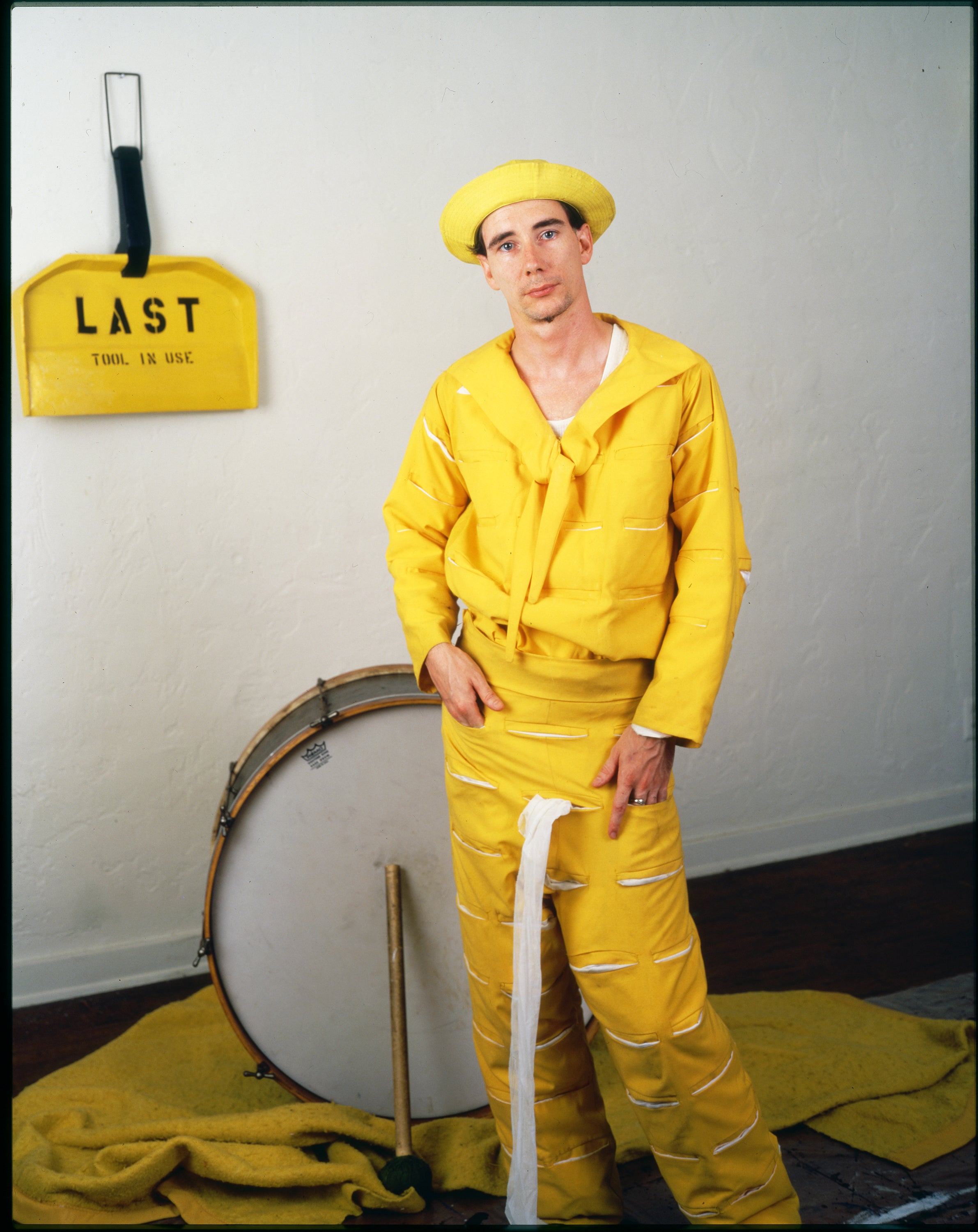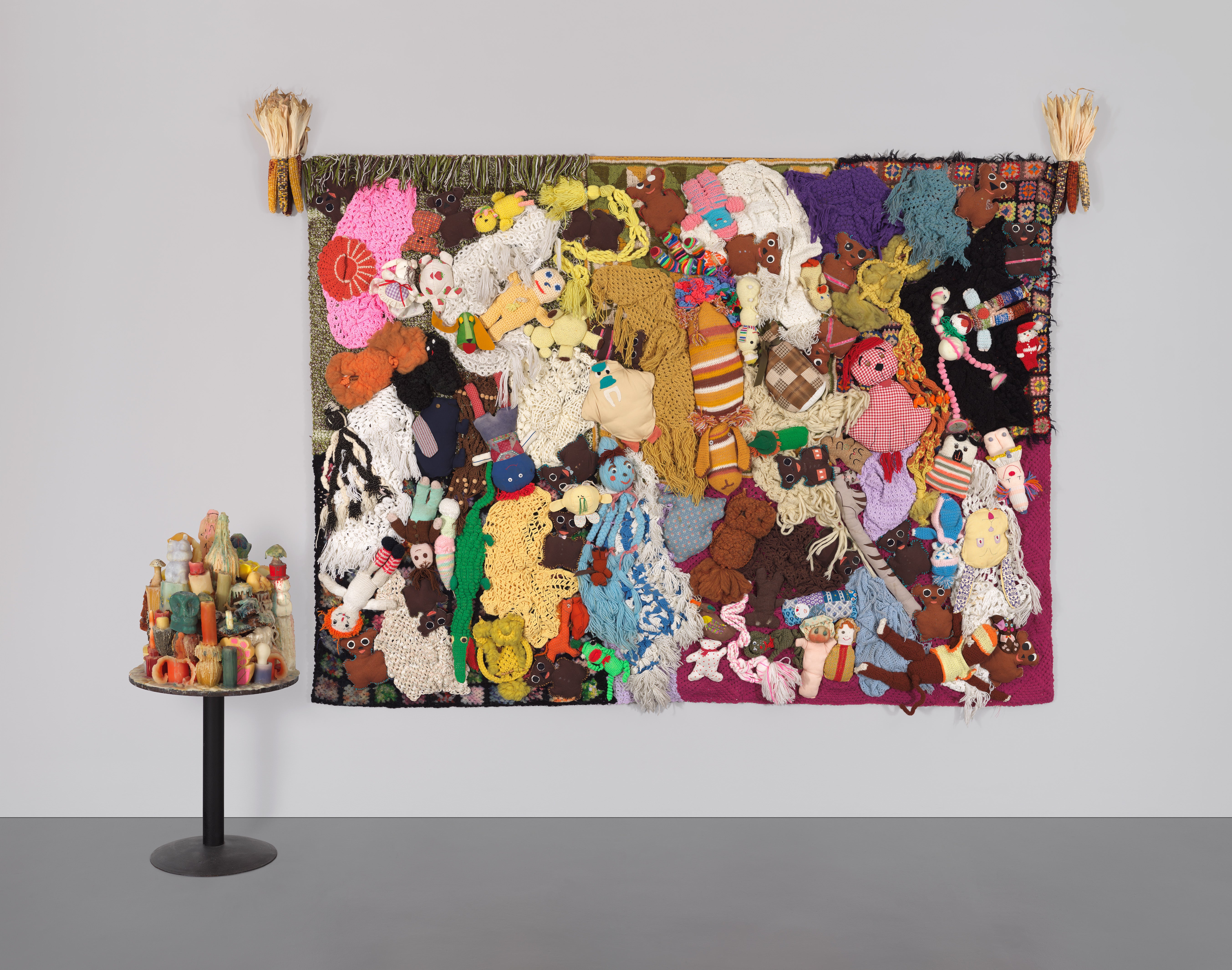Mike Kelley, Ghost and Spirit review: American artist’s conceptual art was trashy, visceral and hilarious
Perverse genius or stroppy teenager? The first major UK exhibition of the work of American artist Mike Kelley, who died of apparent suicide in 2012, suggests he was a brilliant mix of both

For most of us the term “conceptual art” brings to mind sterile surfaces, arid, wilfully obscure ideas, and the artist as an aloof, frustratingly remote figure. The American Mike Kelley, however, created a kind of dirty conceptual art that played with the viewer’s perceptions, while making space for such patently nonconceptual elements as childhood trauma, ghosts, cuddly toys and bodily functions – lots of them.
Since his death in an apparent suicide in 2012, the Detroit-raised, LA-based Kelley has become one of art’s hottest names to drop. Yet, until now, there has been no substantial exhibition this side of the pond, making it hard to judge quite what the fuss has been about. This major survey at Tate Modern is, then, our first chance to get a proper view of a fascinating artist whose work combines the cerebral and the visceral, the otherworldly and the trashy to often hilarious effect.
The fact that Kelley hailed from a city regarded by many as the birthplace of punk is far from incidental. He got into art and theatre as a teenager via the White Panther Party, the far-left group that spawned the legendary proto-punk band the MC5, and played in the influential noise rock band Destroy All Monsters. Even more importantly, he seems to have retained something of the stroppy teenager throughout his short life.
Son of a school janitor of Irish Catholic heritage, Kelley grew up a self-styled member of the “TV generation” for whom the external world was a “media facade, a fiction, and a pack of lies”. He moved to LA – hardly the easiest place to get a grip on reality – in 1976, when he was already 24, to take a degree at the prestigious Calarts. There he found local fame almost immediately with performances that started out as talks on his sculptural works, but soon became “happenings“ in their own right. One of the first works in the exhibition is a collection of objects used in these events – a drum kit, vintage tape recorder, a pair of maracas – which Kelley assembled into a sculptural installation in 1998. Most notable is the Perspectaphone, a long square-ended megaphone, which Kelley, looking like a deathly pale dead ringer for Nick Cave, is shown “playing” in photographs. Its shape sends up the minimalist idea of sculpture as an empty box – which it sort of resembles – while referencing the Renaissance notion of perspective as a kind of tapering tunnel. Kelley would bellow at audiences through this object, hoping to simultaneously draw in their spirits in a kind of punky-surreal communal rite.
That’s a lot of background to pack into one relatively small object. Sounds and voices seem to come and go through the gallery, while images of Kelley emanating “ectoplasm”, the spiritualist pseudo-energy (actually cotton wool) obviously relate to the show’s subtitle Ghost and Spirit. Yet there’s a dizzying sense of too many ideas to contend with and we’re barely into the first room.
Read into Kelley’s back story and his view that the physical work of art can only be a ghostly substitute for an essentially internal experience, and it’s tempting to think of him as a lapsed Catholic – which he certainly was – striving for authenticity in a world of vacuous graven images. Yet any attempt to impose neat – or even any – interpretations is confounded by the wild cacophonous sprawl of the work itself.

By the time we get to Monkey Island (1982-3), still in the first room, a group of paintings in which Kelley uses schematised images of a monkey’s backside to create a new symbolic visual language based on circles – including male genitals being plunged into a bowl of soup – there’s the sense we’d be better off dropping the search for literal meaning, and going with the flow. Give yourself over to the pleasures of what feels at times like a wander round a 1970s art school while the students are on a tea break, and this exhibition starts to create its own skewed logic.
In The Banana Man (1983), Kelley’s only completed video, he recreates the adventures of a minor character from a cartoon series from his childhood, while wearing a bizarre multi-pocketed yellow costume displayed in the exhibition. The fact that he never saw the episodes featuring this character, and had to reconstruct the scenes from his friends’ descriptions, is apparently the entire point. Again there’s the contrast betwee the authentic experience and the recreated “ghost” experience. We see Kelly rolling around in what looks like a bowl of custard and cavorting in the street while making pronouncements that could be direct descriptions of the cartoon characters’ actions or fragments from some complex conceptual narrative – maybe both. The fact that the video is extremely grainy and Kelly can’t seem to stop smirking makes it feel slightly amateurish.

Kelly’s interest in children’s soft toys, which children believe to be “real“, and his preoccupation with the rituals of suburban America come together in a room that might be seen as a mediation on innocence and experience. Cuddly toys bought in charity shops, including an immensely long purple snake, evoke child fantasy worlds, while applique textiles referencing typically American high school banners deliver provocative counterpointing slogans with a nod to small-town values. “F*CK YOU Now give me a treat please” is fairly typical. The two aspects come together in Manipulating Mass-Produced Idealized Objects (1990), photographs of a performance in which naked adults appear to excrete soft toys. See what I mean about Kelley being a perpetual teenager? And boy, does he know it.
Kelley, who treated his biography as a kind of auto-fiction, to be developed as he went along, responded to assumptions that he’d had a traumatised childhood – which he initially strongly denied – by creating pseudo-forensic models of the various schools and colleges he attended. The implication is that these documented troubling experiences were designed to deliberately muddy a “truthful” understanding of his life and work. Intriguing though these are, it’s difficult to focus because of the unbelievable barrage of screaming and singing bleeding through from the show’s climactic room showcasing Kelley’s great work Day is Done: Extracurricular Activity Projective Reconstructions (2005-6).
Kelley must have been in a category of one among conceptual artists in carrying out quasi-anthropological research into what he described as “folk entertainments” from the American heartland – the place he himself came from. Photographs and videos of amateur musicals, prom parties, Halloween revels and street mimes are displayed beside Kelly’s recreations of them. While the ostensible purpose is to offset the “authentic” reality with the restaged “ghost” version, it’s the wacky intensity of the imagery that will have you rooted to the spot or running for the exit. A Doris Day-style song and dance routine contrasts with a stripper’s silhouette projected onto a permanently swirling purple curtain. In a nightmarish Halloween movie, a teenager auditions for the role of the Virgin Mary and ends up being assaulted by witches. What was original and what is facsimile takes careful reading of the wall labels to work out.
While Kelley’s Michigan-accented, all-American voice is strongly present, with recordings of him reading from his poetic writings throughout, he remains as much of an enigma at the end as at the beginning. But whether he was a perverse genius or a slightly creepy provocateur (likely both) this show has incredible energy, a sense of the mess and confusion of real life blasting through it – factors that are painfully absent in most art today. I’m sure many will hate it. I absolutely loved it.
‘Mike Kelley: Ghost and Spirit’ is at Tate Modern from 3 October to 9 March; tate.org.uk






Join our commenting forum
Join thought-provoking conversations, follow other Independent readers and see their replies
Comments